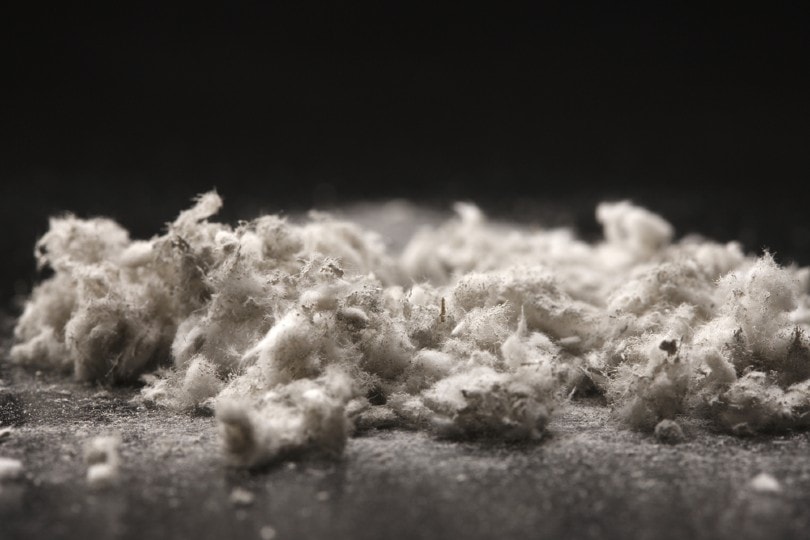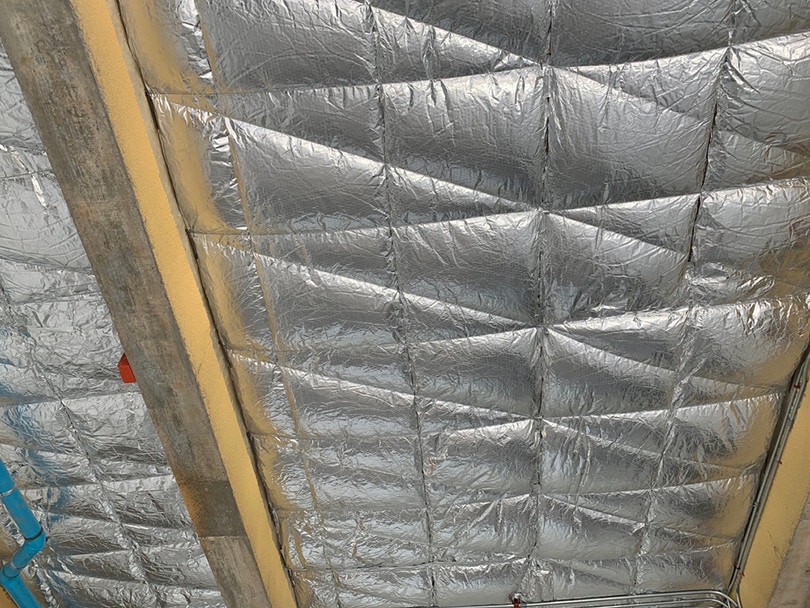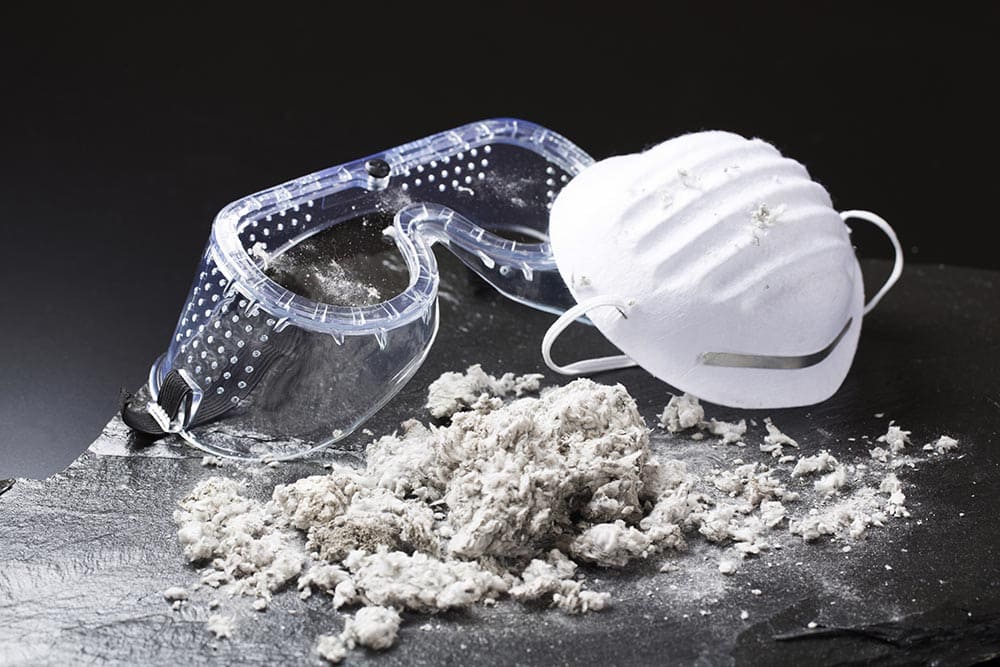When Was Asbestos Banned? Uses, History, & Health Impact
-
Pete Ortiz
- Last updated:

The term asbestos is used to describe a group of fibrous silicate minerals. Overall, there are six types of asbestos on the planet. Highly resistant to rust/corrosion and extreme heat levels, these minerals are perfect for floor tiles, steam pipes, and car brakes, to name a few. Unfortunately, asbestos is hazardous to human lungs. That’s why the EPA banned it in 1989. However, Congress didn’t fully support that.
Why didn’t the government push the ban through? Is the United States still using asbestos? What about other countries? How dangerous are these minerals for our health? If you want to find the answers to these questions and learn about the history of asbestos use and restrictions, stay tuned. We’ll start from the very beginning!
First Uses: From the Stone Age to Ancient Rome
According to archeologists, humans have been using asbestos in the production of pots (mostly ceramic) since the Stone Age. Asbestos is highly resistant to fire, and that’s what made it a valuable resource. There are also mentions of asbestos use in Finland, 4.5K years ago. The locals were strengthening utensils with this mineral to make them last longer.
The first proper description dates back to 300 BC. It was Theophrastus, Aristotle’s successor that highlighted it in his book, On Stone. Roughly 600 years later, Athanasius gave a more detailed description, talking about its resistance to fire. A quick note: the term asbestos was first mentioned by the Romans (Pliny the Elder) in the 1st century.
The Industrial Era: Mid-19th Century
Large-scale asbestos mining started with the rise of the Industrial Revolution. At first, it was the Italians back in the 1850s that tried to establish mass production of asbestos paper and cloth, but their attempts failed. In 1862, England received samples from Canada, and that’s when local manufacturers started to emerge. The Germans were quick to follow the English.
Industrial-scale production began in Canada (Quebec) around that same time. By the 1890s, thanks to then-new equipment and technology, Canadian manufacturers were “pumping out” 10K tons of asbestos. The Russian Empire began mining in the 1880s. The United States joined the club in 1899.
Taking Over the World
At the start of the new century, asbestos became incredibly popular. It was used to make fire-resistant clothes, construction materials (concrete, bricks), pipes and tubes, gaskets, and, of course, insulation. By the 1800s, asbestos mining had already turned into one of the biggest industries in the States.
Early 20th Century: Discovery of Toxic Properties
Dr. H. Montague Murray recognized the hazardous nature of asbestos in 1899. The first documented lethal case was 7 years later, in 1906. Shortly after that, asbestos mining towns became the center of premature deaths and lung diseases. This was proven by research not only in the States but also in Italy and France. In 1931, the Parliament of the UK published a set of asbestos regulations.
In 1927, the very first compensation claim for asbestos exposure was made. Six years later, Johns Manville, a large asbestos mining company, managed to settle 11 lawsuits. Things weren’t moving at the same pace in the States, though. According to various reports, business execs knew about the dangers of using asbestos since the 1930s.
But, instead of alarming the public, they covered it all up and even paid various researchers to back them up. The reason: asbestos was the main insulation material during WWII. After the war, it was used heavily in the construction of new homes.

1970: The Clean Act
Asbestos was officially recognized as a hazardous mineral and an air pollutant in 1970. That is when the Clean Act kicked in, giving the EPA the authority to regulate mining, import, and export. As a result, the asbestos production scale started to drop dramatically. In 1976, NIOSH recommended a full ban. It found no support in the government, but by the end of the 70s, most industries in America stopped using asbestos.
That same year, the Toxic Substances Control Act extended EPA’s authority. Unfortunately, it was too late for millions of workers who were already exposed to this deadly mineral.
1989: The US EPA Ban and the Overturn
A study done by the ATSDR has revealed that as many as 27 million workers were exposed to asbestos from 1940 to 1979. The US Army had been using asbestos heavily between the 30s and the 70s, exposing military personnel (especially ship crews) to abnormal levels of asbestos. That’s one of the main reasons why the EPA issued a rule in 1989 calling for a complete ban on all asbestos products.
However, two years later, the ban was challenged by asbestos manufacturers and eventually overturned. Only six categories of asbestos-related products were prohibited, leaving the rest intact. Eventually, mining was banned in the US in 2002. Still, to this day, there are no full-fledged bans on asbestos use in the United States.

The 1970s–2000s: Worldwide Bans
In Japan, asbestos was widely used to cultivate rice growth after WW2. By 1974, the country had reached production peaks, but the scale dropped significantly in 1990. In Australia, asbestos was a booming industry from 1946 to 1980. The government put a stop to mining in 1983, though, due to rising concerns about its effect on human bodies. The use of this mineral was prohibited in 2003.
Today, Chrysotile (white asbestos) is no longer being used in Australia and the EU. As for crocidolite and amosite, the blue and brown asbestos minerals, by the 80s, they were banned in most of Europe and the US (the UK implemented the ban in 1985). Japan did the same in 1995. Right now, 66 countries have a permanent ban on asbestos use. All forms of asbestos were restricted in 2005 (EU) and 2006 (UK).
The 21st Century: New Regulations
Today, approximately 1.3 million Americans are at risk of being infected by asbestos at work. In 2020, an EPA inspection showed that many employees in the automobile industry were still being exposed to it. Since 2019, the organization has had a legal right to check asbestos-containing products before allowing them into the States. In 2007, the 2002 Ban Asbestos in America Act passed the Senate.
But, it didn’t find support in the House of Representatives. In 2018, Canada made asbestos trade, import, and manufacturing illegal. New Zealand prohibited the import of asbestos minerals a bit earlier, in 2015. The South-Korean ban occurred in 2009, following a partial ban in 1997. However, despite all these efforts, millions of homes around the world still contain asbestos in the walls and floors.
For example, 60% of houses built in Australia between the 1940s and 1980s have it.
Fiberglass: The New Insulation King
In 1933, Games Slayter, an American engineer, introduced a revolutionary glass wool/fiberglass production method and took the world by storm. Today, it’s the most popular insulation material. And, while there is some speculation about its safety, generally, it’s considered to be harmless to humans.
Equally thick, resistant, and flexible, it’s much lighter than asbestos. It’s important to mention that manufacturing facilities in the US have been using alternatives since the 80s, bringing asbestos exposure levels to historical lows. We’re talking about polyurethane foam, silica fabric, cellulose fiber, and more.
What Is Asbestos? What Is It Used For?
Toxic by nature, this group of minerals (six in total) occurs in soil and rocks and is mostly exported by China, Russia, and Kazakhstan. All asbestos minerals are composed of fibrous crystals, which, in turn, are made up of fibrils—much smaller particles—that are poisonous and easily released into the atmosphere. So, what’s the biggest “selling point” here? Asbestos is practically immune to heat, corrosion, and electricity.
Relatively cheap and easy to work with, it can insulate pretty much anything, including floors, attics, and water pipes, to name a few. And when mixed with plastic, cement, and paper, it increases their durability and lifespan.
- Brake pads, gaskets, and clutches
- Roofing materials
- Sheeting and cement pipe
- Vinyl tile
- Electric motor components and wire conduits
- Heating appliances/equipment
- Insulation products and pads
- Coatings and finishing products
- Furniture for labs and chemical containers
- Paper products
Health Impact: How Dangerous Are the Side Effects?
When left untouched, asbestos isn’t hazardous. However, when it’s disturbed, tiny fibers are released into the air. They find their way into our lungs when we breathe. Once inhaled, the dust/fibers are impossible to get rid of. Sometimes, they stay in our bodies for many years, or even decades, leading to severe consequences. Lung cancer, mesothelioma, and asbestosis are the biggest side effects of exposure.
Now, if you were only exposed to asbestos for a short period, chances are you won’t get any significant health problems. Long-time exposure, in contrast, is deadly, and right now, there are no treatments or medications that can reverse the effects. That’s why asbestos is the #1 cause of injuries, illnesses, and deaths at work.
Conclusion
And that concludes our journey into the history of use, regulations, bans, and substitutes for asbestos. While they are, indeed, dangerous, and should always be treated with care, these minerals are still not completely banned. On the bright side, fiberglass is taking the lead as the #1 insulation material. Along with that, world governments are implementing new, strict policies in an attempt to regulate asbestos use for good.
It’s been around for thousands of years, gaining momentum during the Industrial Revolution. Even today, it’s still being used by hundreds of facilities around the globe to produce paper products, tiles, brakes, gaskets, pipes, and so much more. Asbestos helps cut production costs, speeds up manufacturing times, and keeps our homes warm!
- Asbestos Ban and Phase-Out Federal Register Notices
- NationalInventorsHallsofFame – Games Slayter
- CDC – Where is Asbestos Found?
- Who Is at Risk of Exposure to Asbestos?
- No Asbestos Ban in the US
- Gov – Where Is Asbestos Found?
- Ban Asbestos in America Act of 2007
- THE ASBESTOS INDUSTRY COVER-UP
- Evolution of the Clean Air Act
- What Is Asbestos?
- OSHA – What is asbestos?
- Role of Asbestos Regulators
- EPA – Learn About Asbestos
- Wikipedia – Asbestos
Featured Image Credit: KPG-Payless, Shutterstock
Contents


